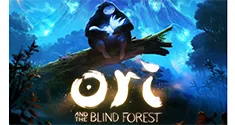
Posted Thu Jun 19, 2014 at 06:24 PM PDT by Brian Hoss
The stunning trailer is only the beginning.
Smack dab in the middle of the 2014 Xbox Briefing, which is itself the kick-off for E3, emerged a four year secret. This was a secret kept by two entities, Microsoft and Moon Studios, and as the world watched, a new game, 'Ori and the Blind Forest' bound its audience, both live and streaming the world over. That trailer, viewable below, is the kind of visual storytelling that will dazzle the viewer with color before pulling their heart strings.
Naturally, as with many at E3, I needed to learn more about this game, and fortunately with a little help I managed to get into one of the packed demonstrations. The demo was presented by Moon Studios Game Director Thomas Mahler (former Cinematic Artist at Blizzard Entertainment) and Producer Daniel Smith from Microsoft. The session took place smack dab in the middle of E3 at what can be described as the tipping point just before everyone at presenting E3 begins to exhibit serious fatigue. Mahler's presentation was anything but bleary eyed. The whole week was the first time that anyone at Moon Studios could publically talk about their game, and the years of labor came through with perfect enthusiasm.
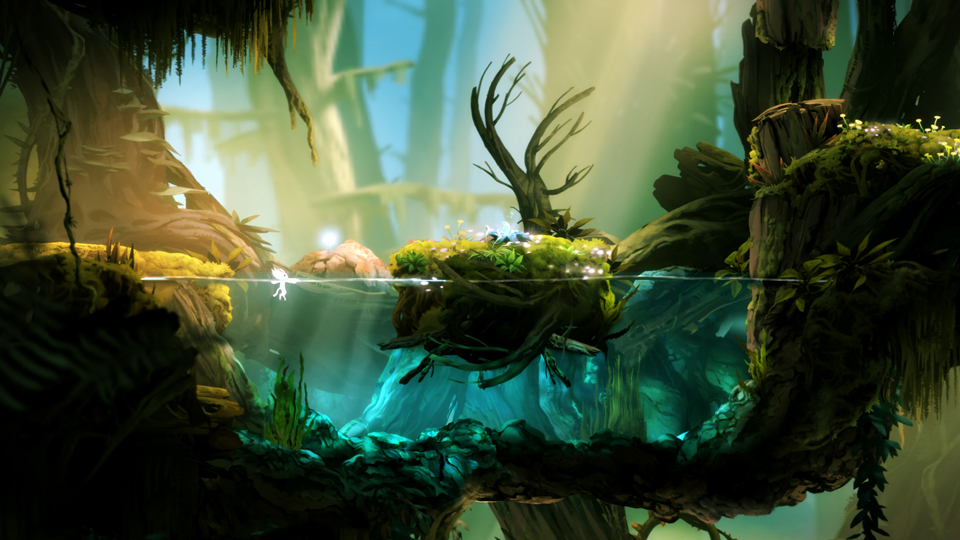
The game is about Ori, the last spirit guardian, a beautiful creature in a brilliant but fading forest, but that's only half the equation. The other half resides with Kuro, the dark owl. Their story, their conflict over and within the Blind Forest as told in the trailer has made an instant sensation.
There was just one problem. The trailer that had so moved audiences had also produced a kind of trepidation. The fear being that people might hastily conclude that the beautiful and emotive trailer meant that the game was more of an art project to be viewed rather than played seriously.
Consider for a moment the true origin of the game's development. Moon Studios was looking to bring the platforming fun and challenge of games like 'Super Mario Bros. 3' and 'Super Meat Boy' to a Metroidvainia, and that's why the feel of the gameplay is so important. When Microsoft decided to publish the game and support development, the prototype was still in white box phase.
Fast forward, and you have incredible drawn art and soundtrack can expect awards. The levels have an amazing range of light which is an art focus of its own, and they make full use of parallax. It's instantly comparable with the UbiArt Framework that powers 'Child of Light,' 'Rayman Origins,' and 'Valiant Hearts,' but 'Ori and the Blind Forest' is powered by the Unity engine. The game in cutscenes and in levels is vivid, but it's also a game that promises players pixel-perfect platforming.
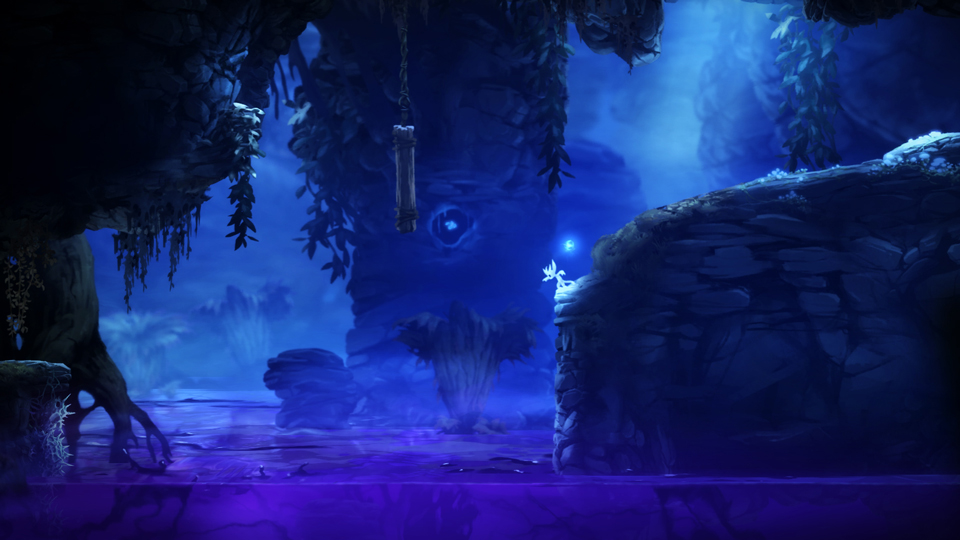
That means that the paltforming is not subject to the will of simple box collision. When I played the short demo, this smooth nature was immediately evident. Playing as Ori you emit energy back and forth, towards enemies, who drop energy that you collect. Fairly standard, but this was only the very beginning of the game. I was able to play far enough to see exactly how their implementation of the Metroidvania progression worked.
My big regret was that since the game felt so natural, the responses to jump commands so smooth, the tutorial was naturally simpler than the game that was described to me. Then again, Thomas was very proud to present the game in 1080p at 60 FPS on the Xbox One and free of any loading screen.
I was hoping that the no loading screen promise meant from dashboard to gameplay in one click, but alas, it referred to the world and to the sub menus like the map. In a small demo it's hard to appreciate, but in one aspect it was obvious.
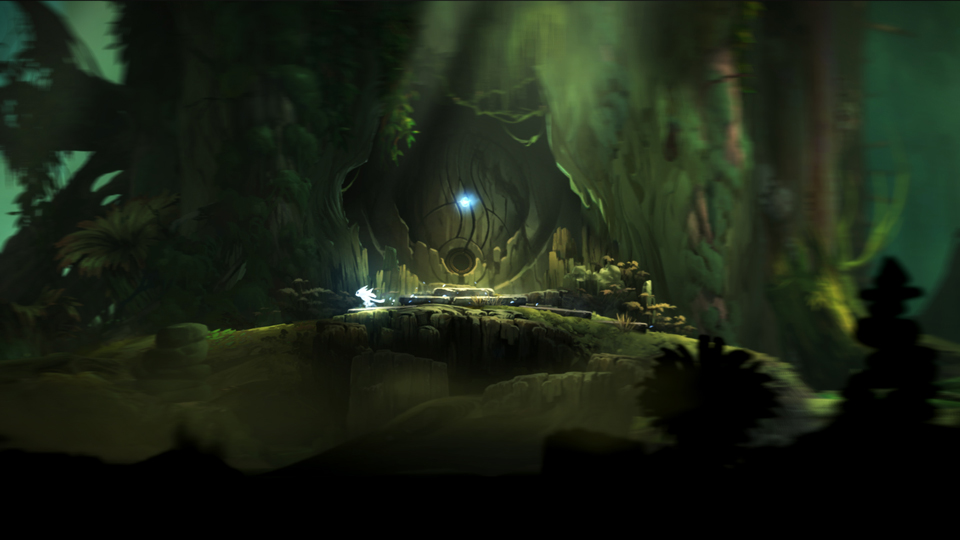
As you play, you fill a meter that once filled can be expended to set a checkpoint. These checkpoints are your only checkpoints aside from major save points. Since the loading time is nonexistent, that means you can set a checkpoint right before a tricky set of jumps. You die and return to the check point without even a whisper of loading. The checkpoint mechanic has other effects as well.
When playing the demo I was surprised after jumping onto a platform by an enemy on the ceiling above. The trick is to dispatch the enemy without falling off the narrow platform. Since I failed at it the first time and was killed, I set a checkpoint right before attempting it again. Later on, I came to what was a similar set of jumps but doubled. This time I went ahead and set a checkpoint right away. In both instances, I didn't really need the checkpoints, but having them there where I had chosen to put them allowed me to be more aggressive. Jump, attack, jump, attack - in quick succession while dodging the enemy.

The funny thing too is how the skill progression works. You basically have your major abilities such as wall jump, which must be found and are key to progressing through world, which judging by world map is not small, and you have your skill tree skills. A magnetic ability to attract energy was the first that Daniel Smith chose when he was playing, but I opted for a faster cool down on my attack. (Managing that cool down rather than just spamming attack is key early on.) Ultimately, it seems like the skills tree lets the player affect the game's difficulty and to maximize the player's relative strengths.
With the optional skills, the user-set checkpoints, the smooth control, and the lack of loading screens, Mahler even talked about envisioning 'Dark Souls' like speed runs, where players extrude the quickest strategy to navigate each part of the game.
So then you have this game that really aims to be a very serious platformer (more so than Metroidvanias past), but also has already enthralled the public with its visuals and story. In the balance are bosses, the game really doesn't have them. Mahler described wanting to avoid the obligatory nature of bossfights, which can break the rhythm of platforming. Instead, there are moments of the game which are meant to significant not in "here's a boss I need to trash at until it dies" way, but in a there's that character I have been seeking but will only encounter a precious few times way.
The game is due this fall on the Xbox One and PC, and there is still much to be finished. What was also surprising about it, were some of the development details. It's been backed by Microsoft for years (as in pre ID@Xbox attitude), but Moon Studios is a distributed developer, which is a bit unconventional. Mahler and his team all work remotely, and are thereby able to work around the clock. Check-ins occur at all hours, and the studio seems to really be embracing the independent, "if it's promising let's try it" attitude. I'm certain that Mahler was mining his various audiences for their input on the project, this at a place where developers tend to become very (understandably) tired and wary in response to suggestions.
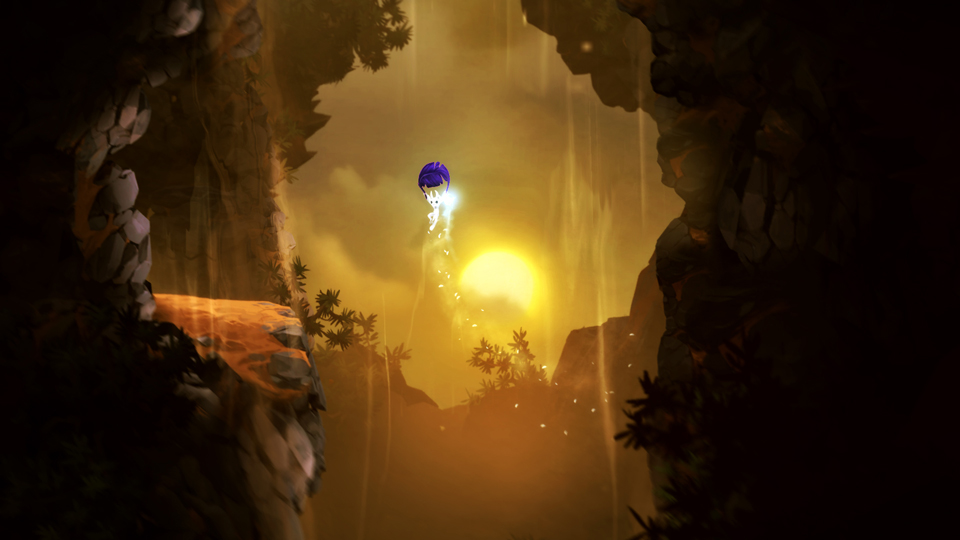
But where the game's development scheme might not interest players at large, there's no doubt that the magic moment when the E3 audience practically swooned over the trailer will eventually give way to a large player base diverse in genre tastes. We want the beautiful Ori, but we also want the dreadful Kuro.
You can find the latest info on 'Ori and the Blind Forest' linked from our Video Game Release Schedule.
See what people are saying about this story in our forums area, or check out other recent discussions.
The latest news on all things 4K Ultra HD, blu-ray and Gear.